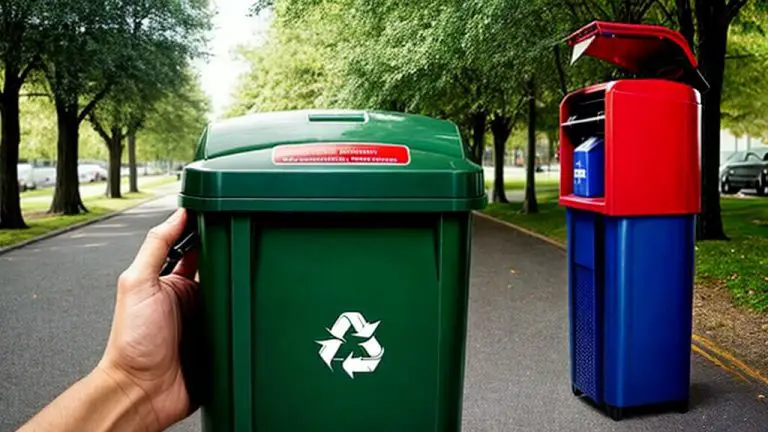Recycling as an Eco-Friendly Disposal Method
Regarding disposing of lighters, recycling is an eco-friendly option that can help reduce waste and prevent harmful materials from ending up in landfills. Before recycling a lighter, it is important to ensure it is fully empty and free of any fuel.
Many recycling facilities and programs accept lighters as part of their metal recycling efforts. Look for designated recycling bins or collection centers in your community, or contact your local waste management authority to find out where to dispose of your lighter properly. Some retailers, such as convenience stores or gas stations, may also offer recycling options for lighters. Note on how to tell if silver is real with lighter.
Proper Disposal of Empty Lighters
It’s important to properly dispose of empty lighters to prevent environmental harm and potential safety hazards. Here are some steps to follow for responsible disposal:
- Empty the lighter of all fuel. You can do this by holding the lighter upside down and pressing the nozzle until no more fuel escapes.
- Wrap the empty lighter in several layers of newspaper or other absorbent material to prevent it from igniting.
- Place the wrapped lighter in the regular trash bin or designated disposal bin for small metal items. Do not put it in the recycling bin, as lighters typically contain a mix of metal and plastic parts that are difficult to separate.
Another option is to check if your community offers hazardous waste disposal programs that accept lighters. They may have specific guidelines for preparing and transporting the lighter for disposal.
By properly disposing of empty lighters, you can help reduce the amount of waste in landfills and protect the environment.
Donating Lighters for Reuse
Donating lighters for reuse is an excellent alternative to just throwing them away. Rather than contributing to the growing waste problem, donating your lightly used or unused lighters gives them a new life and helps those in need. Many organizations and communities collect these items and distribute them to people who could benefit from them.
Some organizations that accept donated lighters include shelters, community centers, and disaster relief organizations that distribute supplies to affected communities. Before donating your lighters, ensure they are in good condition and functioning properly.
It’s also worth noting that some people might have difficulty purchasing lighters due to financial constraints, making your donation all the more meaningful. Plus, reusing items instead of discarding them is always a more sustainable and mindful approach.
Safe Disposal of Damaged or Defective Lighters
It is important to safely dispose of any damaged or defective lighters to prevent accidents or environmental harm. Deactivating the lighter and rendering it unusable is the first step in proper disposal.
If the lighter is still partially full, it is recommended to empty it by igniting the flame until the fuel is completely exhausted. Once empty, the lighter can be deactivated by disassembling it and removing the flint and any remaining fuel. The flint can be safely disposed of in the regular trash, while the fuel should be dropped off at a hazardous waste disposal facility.
If the lighter is empty or cannot be emptied, it should be sealed in a puncture-resistant container, such as a metal can, and disposed of in the regular trash. This will prevent any residual fuel from leaking out and causing harm.
It is important to note that some areas may have specific regulations for disposing damaged or defective lighters. It is recommended to check with local waste management authorities or government websites for guidance on proper disposal methods to avoid potential fines or penalties.
Additional Information
When disposing of a lighter, it is important to consider the environmental impact. Recycling or donating lightly used lighters are two eco-friendly options to reduce waste. Incineration should only be considered as a last resort.
Reusing Lighters to Reduce Waste
Instead of disposing of lighters after a single use, consider reusing them to extend their lifespan and reduce waste. Here are some tips for reusing lighters:
- Refill the lighter with fuel instead of buying a new one. This can be more cost-effective and reduce the number of lighters that end up in landfills.
- Replace the flint in the lighter instead of throwing it away. This simple process can make a lighter last much longer.
- Repurpose old lighters for creative projects. For example, they can be used as weights for hanging art or as rolling wheel substitutes for small toys.
By reusing lighters, we can reduce the amount of plastic waste in our environment and save money in the process.
Composting Biodegradable Lighters
Composting is a popular eco-friendly method of disposing of biodegradable products, including biodegradable lighters. These lighters are made of cornstarch, which breaks down naturally over time when exposed to the right conditions.
To compost a biodegradable lighter, it’s important to ensure it’s empty of fuel and any other remaining materials. This can be done by removing the cap and using a small tool to push the remaining fuel out of the lighter.
Once empty, the lighter can be placed in a compost bin or pile with other organic materials, such as food scraps and yard waste. It’s important to ensure that the lighter is buried deep enough in the compost pile to break down evenly and efficiently.
Monitoring the compost pile and ensuring it reaches the appropriate temperature for proper breakdown is also crucial. This usually means maintaining a temperature of around 130-160 degrees Fahrenheit for several weeks.
While composting biodegradable lighters is an eco-friendly option, it’s important to note that not all lighters are biodegradable. In fact, many traditional lighters are made of plastic and other materials that do not break down naturally. In these cases, it’s important to choose an appropriate disposal method that prioritizes reducing waste and minimizing environmental harm.
Checking Local Regulations for Lighter Disposal
It is important to check your local regulations for properly disposing of lighters. Rules and restrictions may vary depending on your city or state. You can contact your local waste management authorities or visit official government websites to find out specific information.
Improper disposal of lighters can result in penalties and fines. It is important to follow the guidelines set by your local regulations to ensure your lighters’ safe and legal disposal.
Safe Disposal of Butane Lighters
Butane lighters are commonly used to light cigarettes, candles, and other small fires. If you have an empty butane lighter that needs to be disposed of, it’s important to do so safely and responsibly to avoid any potential hazards. Follow these steps to dispose of your butane lighter properly:
- Empty the lighter: First, ensure the lighter is empty by igniting any remaining fuel until the flame goes out.
- Depressurize the lighter: Depressurize the lighter by turning the adjustment knob to the lowest setting and pressing down on the ignition button until all the remaining gas is released.
- Dispose of the lighter: Once it is completely empty and depressurized, it can be safely disposed of in the regular trash. However, it’s important to check local regulations regarding butane lighters to ensure proper disposal.
If you also have an empty butane canister, it should be treated as hazardous waste and disposed of at a designated disposal facility. Alternatively, many recycling programs accept empty butane canisters if they are punctured to release the remaining gas and then disposed of properly.
By following these simple steps, you can ensure that your butane lighter is disposed of safely and following local regulations.
Incineration as a Last Resort for Lighter Disposal
Incineration should be considered a last resort for lighter disposal. While it may seem convenient, it is important to remember that burning lighters can release harmful chemicals into the air and contribute to air pollution. Therefore, exploring other eco-friendly options before considering incineration is crucial.
If incineration is the only feasible option, it is important to follow all local regulations and guidelines for safe disposal. This may involve contacting local waste management authorities or hazardous waste disposal facilities for guidance on appropriate incineration methods.
It is crucial to take the necessary safety precautions when incinerating lighters. This may involve wearing protective equipment such as gloves and masks to avoid inhalation of harmful chemicals. It is also important to ensure that the fire is contained and monitored to prevent the spread of flames and subsequent environmental damage.
Remember, incineration should only be considered as a last resort for lighter disposal. It is important to prioritize eco-friendly options such as recycling, donating, and composting before resorting to incineration. By taking the appropriate steps to dispose of lighters safely and responsibly, we can all contribute to creating a cleaner and healthier environment.
Conclusion
In conclusion, it is crucial to dispose of lighters safely and eco-friendly. Whether it is through recycling, proper disposal, or repurposing, each individual can make a difference in creating a cleaner environment. It is important to research and follow local regulations to ensure proper disposal. Remember, incineration should only be considered as a last resort, and safety precautions must be taken. By choosing the appropriate disposal method based on your specific situation, you can help reduce waste and protect our planet.

I’m Alfred Davis, and I’m all about lighters. Hailing from the great state of Texas, USA, I’ve cultivated a deep passion for these fascinating gadgets. With years of hands-on experience and a burning curiosity (pun intended), I’ve become an expert in all things related to lighters.
My journey with lighters began as a hobby and quickly became a full-blown obsession. I’ve explored the diverse world of lighters inside and out, from classic Zippo designs to modern plasma arc models. I’ve tested, tinkered with, and even collected rare pieces while learning the intricate mechanics and unique histories behind each one.
Through my writing, I aim to share my knowledge, insights, and reviews to help you make informed decisions about choosing the perfect lighter. Whether you’re a seasoned collector or just looking for a reliable fire source, I’ve got you covered. Join me in unraveling the fascinating realm of lighters right here at LightersInfo, where ignition meets expertise.
Alfred Davis

